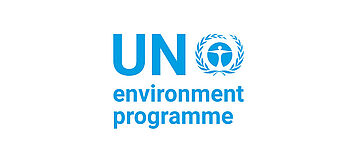UNEP

The United Nations Environment Programme (UNEP), which has its headquarters in Nairobi, was founded in 1972 at the United Nations Conference on the Human Environment, UNCHE. UNEP is the only United Nations body focussed exclusively on the environment. In accordance with its mandate, UNEP is "the leading global environmental authority", coordinates United Nations environmental activities, produces comprehensive reports on the state of the environment worldwide, develops political and legal instruments for international environmental protection and offers consulting services to interested countries. The organisation is headed by Executive Director Inger Andersen. Previous Executive Directors were Klaus Töpfer (Germany’s former Environment Minister), Achim Steiner (the current UNDP Administrator), and Erik Solheim (Norway’s former Environment Minister).
At the United Nations Conference on Sustainable Development (Rio+20) in Rio de Janeiro in June 2012, the role of UNEP as the voice of the environment within the United Nations system was strengthened. In the Rio+20 Outcome Document the following reforms were set out for UNEP:
- universal membership instead of 58 member states;
- increased share of the regular budget of the United Nations and increased voluntary contributions from the member countries for UNEP;
- strengthening and expanding UNEP's leading role in the formulation of United Nations system-wide strategies on the environment;
- ensuring the active participation of all stakeholders drawing especially from civil society and
- strengthening the headquarters in Nairobi.
UNEP structure and bodies
UN Environment has an Executive Office, a leadership level and the following seven main divisions:
- Communications Division
- Economy Division
- Ecosystems Division
- Law Division
- Science Division
- Policy and Programme Division
- Corporate Services Division
UNEP also has six regional offices for Africa, Asia and Pacific, Europe, Latin America and the Caribbean, North America, and West Asia, which ensure close cooperation with these regions.
The main decision-making body, pursuant to a UNEP Governing Council decision of February 2013, is the United Nations Environment Assembly (UNEA) in which all UN member nations are represented. The decisions of UNEA are prepared by the Committee of Permanent Representatives, a subsidiary body.
Since June 2014, the United Nations Environment Assembly meets every two years. The fourth session, from 11 to 15 March 2019, has the title "Innovative solutions for environmental challenges and sustainable consumption and production".
UNEA replaces the UNEP Governing Council (a 58-member body founded in 1972) and the former Global Ministerial Environment Forum, a high-level part of the Governing Council, which met in parallel with the Governing Council sessions from 1999.
The United Nations Environment Assembly is the central governing body of UN Environment and its decisions set the priorities for UN Environment's work. It also sets priorities for global environmental policy, advises the UN system on environmental policy issues, provides recommendations on new environmental challenges, examines existing practices, encourages the exchange of experience, organises dialogues with industry and all civil society groups and promotes partnerships that pursue environmental objectives and mobilise resources.
The Committee of Permanent Representatives (CPR), which meets four times a year, is the permanent subsidiary body of UNEA comprising representatives from countries accredited in Nairobi, who monitor the work of UN Environment between UNEA sessions, advise UNEA and stimulate programme-related discussions. As it communicates directly with UN Environment, the CPR is an important connection between UN Environment and national governments. An expanded CPR with representatives from the capitals and civil society groups holds a preparatory meeting every two years in the run-up to the UNEA session.
Multilateral Environment Agreements
Since its founding UNEP has played a key role for the development of multilateral environmental agreements (MEAs). The secretariats for the following nine MEAs are currently hosted by UNEP:
Since 2013, the Conferences of the Parties to the three Agreements of Basel, Stockholm and Rotterdam have been held at the same time.
UNEP strategies
The basis for UNEP activities is the Medium-Term Strategy, which always covers a period of four years and sets out priorities and goals with indicators and expected results. From this strategy document, a detailed two year Strategic Framework is drawn up, which sets out priorities for the seven thematic areas (Climate Change, Disasters and Conflicts, Ecosystem Management, Environmental Governance, Chemicals and Waste, Resource Efficiency and Environment under Review) as well as a strategy taking external factors into account. The two-year Programme of Work is based on the Strategic Framework and outlines expected output, which is measured using indicators. For each of the thematic areas a budget and staff contingent is specified.
Financing
The UN Environment budget is made up of three elements, the Environment Fund, trust funds and funds provided from the UN's regular budget. Parallel to the two-year Programme of Work, the UN Environment budget is finalised for a two-year period. The total UN Environment budget for 2016 and 2017 was 954 million US dollars.
The UN Environment core budget is the Environment Fund, which comes from voluntary contributions made by the member states. For the 2016-2017 period this was around 129 million US dollars. For many years, Germany has been one of the largest contributors to the Environment Fund. In 2017, Germany was the biggest contributor with around 8.3 million US dollars and in 2018 Germany’s contribution amounted to 8.8. million US dollars. The UN Environment share of the UN regular budget was increased at the UN Conference on Sustainable Development (Rio+20) in 2012. For the 2016-2017 period this share was around 45 million US dollars.
UN Environment receives the largest share of its funding from the trust funds and earmarked contributions. These funds support UN Environment's work in part, but the largest share of them goes towards environmental agreements, protocols and regional programmes managed by UN Environment. A total of 372 million US dollars were contributed for the 2016-2017 period. Germany makes annual contributions here as well. For 2016 and 2017, an estimated 8 and 21 million US dollars have been allocated for this respectively from the Federal Environment Ministry's budget alone. Other contributors include the Global Environment Facility and other international funds.
